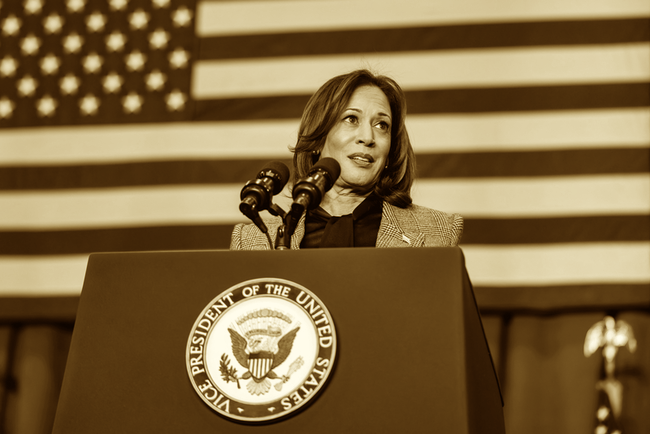Child Welfare Lawsuits
Luciana Perez Uribe Guinassi, The News & Observer, 8/28/24
North Carolina puts thousands of children in harm’s way by failing to fix the state’s broken child welfare system, says a federal class action complaint filed on behalf of nine foster children. For more than a decade, the state Department of Health and Human Services ignored warnings that its failure to lead and supervise county departments of social services ”places foster children across the state at substantial risk of harm,” says the lawsuit, which was filed Aug. 27.
Gov. Roy Cooper, Secretary of Health and Human Services Kody Kinsley and others, including Mecklenburg County, are listed as defendants. The Cooper administration has already been sued for foster-care failures.
A separate lawsuit accuses the state of unnecessarily warehousing foster children in locked psychiatric facilities. North Carolina has a county-administered social service system, meaning that counties largely control child welfare services. The state provides guidance and is supposed to conduct monthly reviews.
It can also put a county under a corrective action plan or do a takeover. The lawsuit also names Mecklenburg County Department of Social Services, Gaston County and its Department of Social Services as defendants.
Those organizations “have failed to provide timely and appropriate treatment, to place children in safe and appropriate foster homes, to thoroughly investigate allegations of maltreatment in care, and to recruit necessary and appropriate foster homes.”
In 2012, there were 6,920 non-relative foster homes in North Carolina and in 2022, there were only 5,183, the lawsuit states. But the number of foster children increased from approximately 8,400 in 2012 to 10,200 in 2022, it says.
As foster care capacity decreases, foster children find themselves “in jails, emergency rooms, DSS offices, homeless shelters, hotels, and other inappropriate and unsafe settings,” the lawsuit says. The children’s stories are used as the basis for the proposed class action complaint, which seeks action for a class of at least 11,000 children either in the custody of DHHS or who have been involved with it, the lawsuit says. The lawsuit also lists as a sub-class “thousands of children with disabilities who are or will become a ward of DHHS.”
The lawsuit was filed by attorneys with A Better Childhood Inc., a non-profit legal organization based in New York, and attorneys with Nelson Mullins, a Raleigh law firm.
“We have been looking at the North Carolina system for a number of years, and we have known that there have been problems in the North Carolina system, serious problems,” said Marcia Lowry, executive director of A Better Childhood and an attorney in the case. “Each time we have backed off because we had some folks that the state would respond, however, the problem continues, and if anything, it is getting worse,” she said, citing high caseloads, high staff vacancies and inappropriate placements for kids, including putting them up in DSS offices and hotels.
The state agency is responsible for looking at whether counties are following federal law but it hasn’t acted, she said. Cooper spokesman Jordan Monaghan said in an email that “our administration has a strong record of action to protect the people of North Carolina, especially the vulnerable children and families involved in the foster care system.
The legislature’s chronic underfunding of social services, health care, and education slows progress on this work even as critical needs grow.” Asked about the lawsuit, Summer Tonizzo, a DHHS spokesperson, told The N&O that the agency ”cannot” comment on pending litigation. DHHS has acknowledged failures with child protective services. “Too many children are struggling to access the mental health care and support they need to thrive — stuck in cycles of conflict at school, in emergency rooms without access to necessary care and sleeping in child welfare offices,” Kinsley was quoted saying in a January news release. [Source]
Duke Rates
David Mildenberg, Business NC, 8/28/24
Starting January 1, Duke Energy Carolinas residential customers using about 1,000 kilowatts per month in its central North Carolina region will pay about 3.6% less, saving about $62 per year.
The rate reduction ordered by the N.C. Utilities Commission mostly reflects the annual adjustment tied to costs of fuel used to produce electricity at the company’s power plants. The Charlotte-based utility said fuel prices declined by nearly 9%, a savings that is passed on directly to customers. But rates also are affected by all other costs, including modernizing Duke’s system, energy efficiency plans and efforts to reduce energy use. State regulators previously approved a 2.9% annual increase in Duke’s base rates. The declining fuel costs eclipse that increase.
Overall, commercial customers will see an average decrease in their bills of about 7.4% as of Jan. 1, while industrial customers will have an average decrease of less than 1%, Duke said in a release today. The utility has made agreements with industrial customers aimed at smoothing out the impact of volatile fuel costs.
Duke said a 1,000-kilowatt-per-month N.C. customer will pay about $137 a month in 2025, or about $40 less than the national average. That’s nearly $500 a year savings is partly credited to Duke’s nuclear power operation, which makes up about half of total energy generation.
The rate changes follow an Aug. 20 order by the N.C. Utilities Commission.
Duke Energy Carolinas provides electricity to 2.9 million customers in the Carolinas. It includes Charlotte, Durham and the Triad, and it’s part of a multistate company with 8.4 million electric utility customers. Duke Energy’s natural gas business also serves 1.7 million customers in five states.
Rates for Duke Energy Progress, which serves Asheville, Raleigh and eastern North Carolina, haven’t been set yet by the Utilities Commission. [Source]
Downtown Raleigh
Richard Stradling, The News & Observer, 8/28/24
Recent years have been challenging for downtown Raleigh. The COVID-19 pandemic and the lingering work-from-home trend have reduced the number of daily office workers and weeknight visitors. Meanwhile, unrest after the death of George Floyd in 2020 left several businesses looted or burned, and more recent spikes in crime have eroded the sense of safety.
Now the city and the Downtown Raleigh Alliance booster group have developed a five-year economic strategy to reposition the center city for a rebound that builds on recent successes, particularly in housing.
The downtown population has doubled over the last decade, according to the alliance, and more than 1,600 apartments and condos are under construction with another 8,072 planned or proposed. The economic strategy, released Wednesday afternoon at the Martin Marietta Center for the Performing Arts, includes dozens of ideas and proposals.
They focus on four key areas: improving the retail environment with a focus on Fayetteville Street; strengthening the office market; supporting minority and women-owned businesses; and undertaking a series of “catalytic projects,” such as redesigning City Plaza or working with local universities to create a “design hub” downtown.
“I’m thrilled to see these bold ideas that increase vitality in our downtown and stake Raleigh’s place as a world-class destination,” Mayor Mary-Ann Baldwin said in a written statement. “Now comes the important and harder work of bringing this blueprint to life and building the downtown that we all envision.”
The 82-page report was developed over the last year, using input from residents, business leaders and city officials, says Bill King, president and CEO of the downtown alliance. “This strategy is more than a set of recommendations,” King wrote. “It is a vision for downtown Raleigh’s future, focusing on creating a vibrant, inclusive, and resilient urban center that adapts to our community’s evolving needs.”
The report acknowledges the effect of hybrid work on reducing foot traffic downtown. Other challenges include competition from other downtowns and places such as North Hills, that offer “pedestrian friendly, new urbanist environments with curated tenants and a public realm managed by a single owner.”
The strategies outlined in the report range from targeted and straightforward to vague and aspirational. They include renovation grants and streamlined permitting for new retailers; a better environment for pedestrians and cyclists across and along busy Dawson and McDowell streets; and creating a new “Peace Street gateway” to Halifax Mall, on the north end of the State Government Complex, by tearing down the 15-story Archdale building and replacing it with a “signature, must-see public art piece.”
Some of the plan involves connecting downtown to places and institutions outside the core. It includes creating a “bold connection” to Dorothea Dix Park, the 308-acre former state hospital campus separated from downtown by Western Boulevard.
Another idea is to create closer ties between downtown and N.C. State University and its Centennial Campus, through joint marketing or other efforts to attract new businesses and workers. The report ends with more long-term goals, including a downtown professional sports arena or stadium; a central county library; more affordable housing, and potentially moving Central Prison, which sits between downtown and N.C. State’s two campuses. [Source]
Walz Event
Laura Leslie, WRAL News, 8/28/24
Minnesota Gov. Tim Walz will make his first stop in North Carolina as the Democratic vice-presidential nominee. But it will not be a public event. WRAL News has learned Walz will be the headliner at an invitation-only fundraiser for the Harris campaign in midtown Raleigh late Thursday afternoon. Walz will be joined by North Carolina Gov. Roy Cooper. According to an invitation obtained by WRAL News, the event is being hosted by several major Democratic donors. The Harris-Walz campaign did not immediately respond to a request for confirmation. Harris’ last campaign appearance in the state was Aug. 16. [Source]
School Board Switch
T. Keung Hui, The News & Observer, 8/28/24
A school board candidate endorsed by the Wake County Republican Party is dropping out of the race and backing the Democratic supported incumbent.
Robert Morales Vergara announced Wednesday he’s withdrawing from the race for the District 4 Wake County school board seat that represents Southeast Raleigh. Morales Vergara said he’s endorsing incumbent board member Toshiba Rice because they “share a commitment to improving education.”
The school board is officially non-partisan, but it has a 7-2 Democratic majority. Rice was endorsed by the Wake County Democratic Party. Morales Vergara was endorsed by the Wake County Republican Party. In his announcement, Morales Vergara said his decision came “after much reflection and a deep disappointment with the leadership of the Wake GOP.”
“I am deeply disappointed in the direction the Wake GOP leadership has taken,” Morales Vergara said in a news release. “Their recent decisions and actions do not reflect what I believe is best for our people, families, and community.”
The Wake County GOP did not immediately respond to a request for comment Wednesday from The News & Observer. Morales Vergara’s name will still appear on the ballot because he missed the deadline to withdraw. Sean Callan and Mike Williams are opposing Rice for the District 4 seat. Morales Vergara had campaigned as recently as Monday at the Western Wake Republican Club meeting with the other GOP-backed school board candidates and GOP state superintendent nominee Michele Morrow.
Morales Vergara, 27, is a fiscal analyst for the City of Raleigh, He had unsuccessfully run in the March GOP primary for the U.S. House District 2 seat. Morales Vergara announced Wednesday that he’s also endorsing U.S. Rep. Deborah Ross, the Democratic incumbent. Ross will compete in District 2 against Republican Alan Swain and Green Party candidate Michael Dublin. “Deborah Ross has consistently demonstrated her dedication to our community, and I am confident that she will continue to serve our district with integrity and commitment,” Morales Vergara said. [Source]
Homeschooling Numbers
Ben Humphries, Education NC, 8/27/24
Many decisions are left up to school boards when it comes to homeschooling. The state doesn’t dictate whether public schools must allow homeschooled students to enroll part-time, for example. House Bill 800, introduced in the General Assembly in 2023, would have required all school districts to allow part-time enrollment – also sometimes referred to as dual enrollment – of homeschooled students, but it died in committee. Instead of being governed by state law, school district policies on part-time enrollment, extracurricular participation, student placement, and the awarding of credit are contained within their local school board’s policy manuals.
While school boards have the power to adopt any policy they wish as long as it aligns with state and federal regulations, most use prefab clauses. It is common to see, for example, the extracurricular participation policy of one district verbatim in another district’s manual.
This is probably because 114 of the 115 districts (all except for Charlotte-Mecklenburg Schools) are aided by the North Carolina School Boards Association (NCSBA) when writing policies. NCSBA keeps a reference manual called Policies to Lead the Schools (PLS) which Christine Scheef, legal counsel and director of policy for NCSBA, said is updated at least twice a year.
“A lot of local boards use that as a base for their manual,” she said. “So that is why you will sometimes see language that seems identical.” Scheef added that school boards could also be sharing wording directly with no connection to PLS.
Districts can access PLS by paying a one-time fee of $3,500, and NCSBA provides other services such as updates, advice on crafting language, and evaluations of policy language for additional charges. NCSBA also provides web hosting services, which many districts use to host their policy manuals.
Homeschooled students are largely allowed to participate in interscholastic athletics throughout North Carolina. A few districts, such as Wake County Public School System, make no mention of extracurriculars but also don’t explicitly prohibit participation.
Policies are mostly divided between participation in sports and participation in JROTC, the latter of which is more commonly permitted. Only a handful of districts explicitly prohibit participation in sports by homeschooled students, including Duplin County Schools, Bladen County Schools, and Rockingham County Schools. Pender County Schools prohibits participation in sports for middle school homeschooled students.
One district, Wilkes County Schools, explicitly mentions that homeschooled students can enroll in driver’s education.
Likewise, most school districts allow part-time enrollment – usually called dual enrollment in policy manuals – of homeschooled students. Homeschooling parents often praise the ability to send their child to school for part of the day while still conducting most of their education at home.
Many districts have an explicit clause allowing dual enrollment, while others have no explicit clause allowing dual enrollment for homeschooled students but imply their permission through language in their extracurriculars clause. Very few districts explicitly disallow dual enrollment, with Randolph County Schools and New Hanover County Schools disallowing it only for elementary school students, and Winston-Salem/Forsyth County Schools disallowing it across the board. Read more at Education NC.
Development Moratorium
Peter Castagno, Port City Daily, 8/28/24
An area nonprofit is urging Brunswick County officials to enact a moratorium on new development, arguing that a series of recent wastewater leaks caused by Tropical Storm Debby demonstrate that growth has outpaced residents’ infrastructure needs.
Brunswick County Conservation Partnership founder Christie Marek provided a list of recent wastewater leaks to the planning board at its Aug. 12 meeting. She called for a development moratorium to ensure infrastructure can meet demand, address the negative impacts of growth, and provide time for bacteria testing.
“We are not against growth and all developers,” Marek said at the meeting. “We are against irresponsible development that poses a health and safety risk to our community. Right now our county is under a state of emergency.”
Marek’s list of wastewater leaks included more than 900,000 gallons released just in August this year.
Under a 2014 state law, untreated wastewater overflows above 1,000 gallons require public notice. The county reported a cumulative 141,450 gallons of sanitary sewer overflows in its 2022-2023 report, 345,500 gallons in 2021-2022, and 374,500 gallons in 2020-2021.
Brunswick H2GO executive director Bob Walker told Port City Daily he did not believe recent sewer overflows were caused by overdevelopment. “Unfortunately, that’s just the area we’re in,” he said. “We get 12 inches of rain and everything is underwater.”
Walker said he couldn’t speak for Brunswick County utilities — which provides services in a separate region — but estimates H2GO has five to seven years before its system reaches 90% capacity. He argued the quality of utilities’ preventative maintenance programs is a bigger factor determining sewer overflows than capacity.
Navassa Mayor Eulis Willis told PCD he advocates the county carry out a technical assessment to determine if the sewer overflows warrant a development moratorium. [Source]
UNCSA Abuse
Virginia Bridges, The News & Observer, 8/28/24
On Feb. 16, 2021, Elizabeth Wilson typed a simple question on Facebook that launched a landmark lawsuit against this state’s most elite performing arts campus. For years, Wilson struggled with her experiences at the University of North Carolina School of the Arts, where she moved to study modern dance at age 14 in 1985.
Wilson posted on a School of the Arts 1980s alumni page to get a sense if people were finally ready to talk openly about years of abuse. “Curious about how involved NCSA’s founder, John Ehle, was throughout the years. Would he have known about the rampant abuse?” wrote Wilson, now in her 50s. A post in a Facebook group of former NC School of the Arts alumni and staff started an online conversation and connections between those claiming to have suffered abuse from faculty and staff.
Wilson’s post sparked a reckoning for the school, and for alumni themselves, many of whom had until then failed to understand that they were survivors of abuse. The conversation bloomed into some 60 alumni publicly describing harassment, exploitation and abuse. It was settled for $12.5 million this year, with UNCSA leaders acknowledging the former students’ suffering.
“This has without a doubt been a dark time for UNCSA as we came to terms with accounts of sexual abuse, and we honor the courage it took for these alumni to share their experiences,” Chancellor Brian Cole wrote in May.
Seeking justice despite the years that had passed, a handful of alumni reached out to California attorney Gloria Allred, famed for her defense of sexual abuse victims. They set up Zoom calls around June 2021 with her office. Unknown to the former students then, a recent change to North Carolina law opened a unique two-year window for them to take their accusations public.
The law, known as the SAFE Child Act, allowed individuals of any age who were abused as minors to file lawsuits against abusers and institutions that failed to protect them. Allred’s firm reached out to Greensboro-based Lanier Law Group, which agreed to serve as North Carolina counsel, with attorneys Lisa Lanier and Bobby Jenkins leading the lawsuit filed, at first, by seven alumni in September 2021. Fifty-eight plaintiffs signed on before the window snapped shut at the end of 2021. Dozens more volunteered to serve as witnesses.
The many-times updated lawsuit against UNC School of the Arts accused about 40 faculty and staff of abusing or assaulting students — or failing to protect them — between 1969 and 2012. [Source]
Shooting Anniversary
Anthony Wilson, WTVD News, 8/28/24
One year ago, shots fired inside a lab building on the UNC-Chapel Hill campus shocked that community and made worldwide headlines. Wednesday the university honored the memory of associate professor Dr. Zijie Yan when chimes inside the bell tower played Hark The Sound at 1:15 p.m.
Yan earned multiple degrees at Huazhong University of Science and Technology in China before coming to the United States, where he earned his Ph.D. in 2011 at Rensselaer Polytechnic University in New York.
In a Facebook post shared with the university’s Material Sciences and Engineering Community, Department Head Professor Pawel Keblinski wrote in part: “He is remembered fondly by many of us that met him in the classroom, lab, or in the hallway of MRC. Among other things, he distinguished himself with publishing 17 journal articles in the course of his Ph.D. study.”
Yan headed the Yan Research Group at UNC, with a stated major goal of transcending the “boundary between photonics and materials science by developing new techniques to study light-matter interactions at the nanometer scale.” [Source]
Campus Wi-Fi
Matthew Sockol, WNCN News, 8/27/24
A new Wi-Fi network is coming to the University of North Carolina at Chapel Hill which the school calls the most significant upgrade in over 20 years. According to the school, UNC has a 2.4GHz band, released in 1993, and a 5GHz band, released in 1999. UNC will now have Wi-Fi 6E, which allows devices to connect to a 6GHz band.
The school says too many devices use Wi-Fi than the original bands were designed to handle, which causes conversations to overlap and interfere with each other, degrading performance. Over 2,000 devices can be simultaneously connected in one large lecture hall. The 6GHz band will add channels to reduce overlap and interference.
Although only Wi-Fi 6 capable devices will be able to join the 6GHz band, the school says the 2.4 and 5GHz bands will become less congested due to newer devices moving to the new band.
According to UNC, the new Wi-Fi more than doubles the previously available channels, which allows the school to scale wireless in a way it has not been able to do before. The new Wi-Fi is expected to benefit densely populated areas, such as residence halls, apartments, and academic buildings.
Only a small percentage of the current device population on campus is 6E capable, according to UNC. The 6E access points are being increased at no cost to customers. It will be around six years before the entire campus makes the switch to 6E-capable access points. [Source]
Strawberry Crop
Paul Garber, WFDD Radio, 8/28/24
An emerging threat to North Carolina’s strawberries is likely to affect next year’s crop. Neopestalotiopsis, also known as Neo-P, has been around for about five years but scientists are still learning about it, says Mark Hoffmann, a strawberry extension specialist with North Carolina State University. He says the biggest problem with the disease is that there’s no pesticide that’s been able to control it. “Our priority at the moment is really to help growers and really try to find something that we can use to control it better in nurseries, as well as in production fields,” he says. There will be an impact on next year’s crop, Hoffmann says, but it’s too early to tell how big it will be. Neo-P rots the leaves, crown and fruit. Hoffmann says there’s no risk to consumers because the disease kills the strawberry plant. [Source] |






